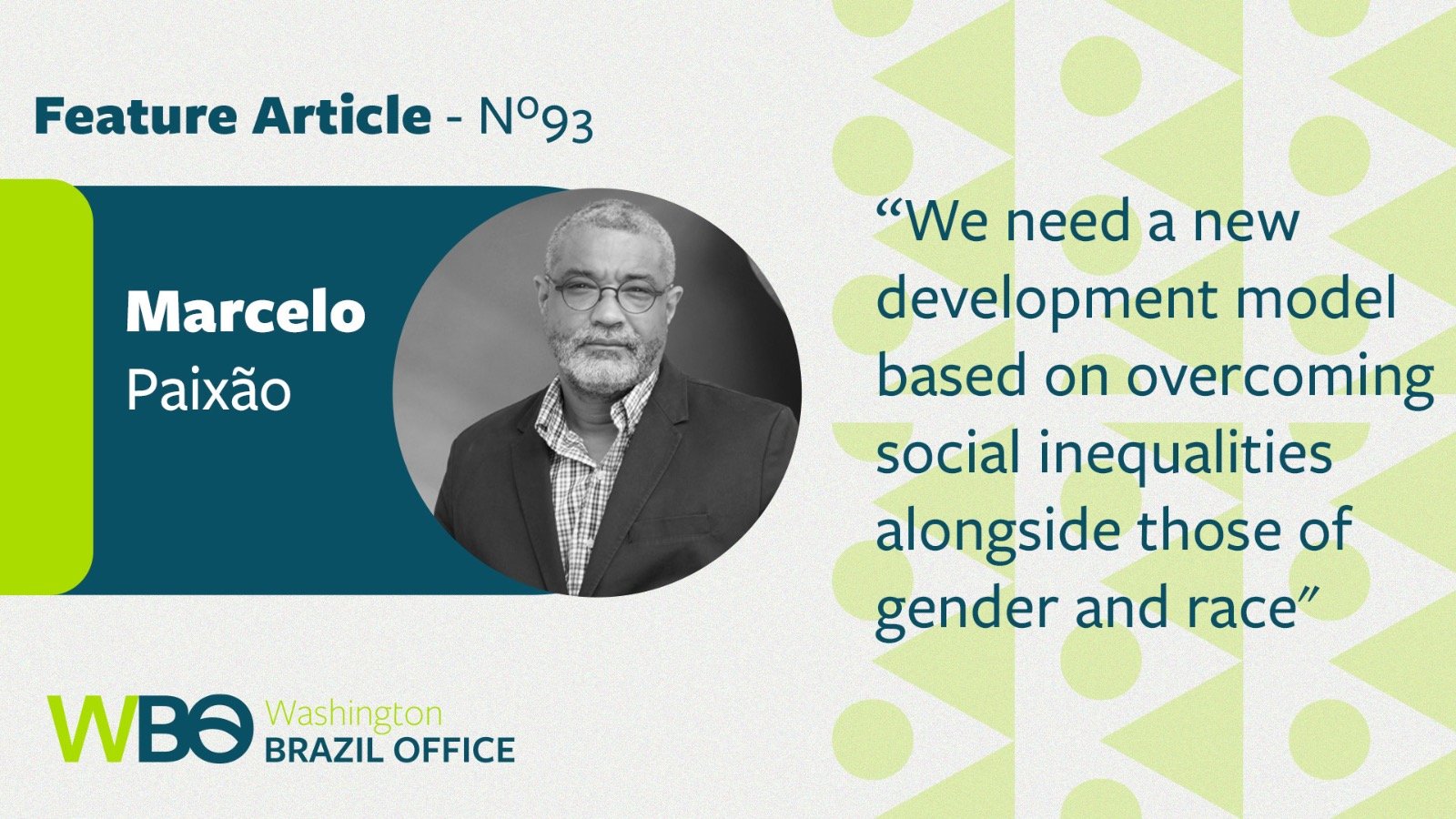Racial Equality in Times of Melancholy
Marcelo Paixão is Associate Professor at the University of Texas, Austin, affiliated with the Department of African Diaspora Studies (AADS) and the Teresa Losano Long Institute for Latin American Studies (LLILAS). This text was originally written for the WBO newsletter. Fill in the form at the bottom of the text to access and subscribe.
One of the greatest fears of the founders of economic sciences was a dark scenario in which, due to the movement of capital accumulation, profit rates would fall to such a point that a great period of melancholy would begin. A century and a half later, Latin American economists such as Celso Furtado and dependency theorists such as Ruy Marini and Theotônio dos Santos would understand that the structural collapses of peripheral economies caused by the system of unequal exchanges and the concentration of income would make economic development impossible in the long term.
If in the long interregnum between 1930 and 1980 Brazilian GDP per capita grew at an annual rate of 4 percent per year, since then until the present day it has hovered around 1 percent. Since 1986, to focus only on the Cruzado Plan, we have collected a series of failed macroeconomic stabilization plans, which were reversed by the Real Plan of 1994. However, it established among Brazilians the harsh antinomy between inflation control and economic growth.
Meanwhile, the world was going through a profound productive transformation, resulting in the displacement of industrial chains to East Asia, but which went far beyond this sector, encompassing an equal revolution in the world of services and information. In the Brazilian case, this same moment was marked by an economy based on the export of primary goods. In 2022, almost two-thirds of our exports came from mining activities and the agro-industrial complex, in contrast to what happened in 1989 when two-thirds of the exported value was manufactured.
The long period of stagnation was accompanied by exponential voracity over natural resources and by a neo-messianic movement of the extreme right, especially in the south and southeast regions and in the extension of the geographically immense arc of deforestation.
Throughout the 1970s, the predominant interpretation was that capitalist economic development would be possible through the articulation between national and international private capital and state investments. If during the Economic Miracle of the early 1970s defenders of the dependency theory were unable to explain what was happening, after almost fifty years, all Brazilian economists have decided to retire the debate on the deeper reasons for the impasses that threw us into the most melancholic period of stagnation in history of the republic.
Brazilian developmental thought was initiated by Roberto Simonsen with História Econômica do Brasil (Economic History of Brazil) published in 1937. Not coincidentally, it was in that same decade that Casa Grande e Senzala (Masters and Slaves, 1933) and Sobrados e Mocambos (Mansions and Shanties, 1936) by Gilberto Freyre and Raízes do Brasil (Brazilian Roots, 1936) by Sérgio Buarque de Hollanda laid the foundations for the modern identity of the Brazilian people centered on the ideas of racial democracy and the cordial man. Therefore, these multiple readings about Brazil's past and future are organically interrelated.
Since this is so, it is impossible not to wonder if the impasse of the Brazilian economy is not directly linked to the ideological matrix that gave rise to it. Unfortunately, racial democracy and the cordial man cannot be dissociated from the Brazilian-style eugenicist logic that pointed to the progressive whitening of its population through miscegenation as the solution to our backwardness. Essential authors of the founding of the modern Brazilian State that emerged in the 1930s, such as Oliveira Viana, Fernando Azevedo, and Gilberto Freyre himself converge in this regard. Today we know that this matrix of thought has failed. Isn't it therefore time to revisit its influences on Brazilian economic thought to discover new horizons?
Currently, there is suspicion surrounding the idea that so-called identity policies compromise the principle of universality that should govern the actions of the Brazilian State. “Greeks were normal children” said old Karl Marx in his Eurocentric model of understanding universal history. Every social action encompasses an inevitable dimension of identity and alterity, and the model based on the unlikely hypothesis of the existence of a universal subject does not escape this understanding.
Gender and racial equality policies do not defend particularism as a principle. They only reveal the particularism hidden in worldviews, which make universal a specific particular type of gender (male-hetero) and racial (white, or in the world of racial democracy, white-mestizo) identity.
If racism and sexism are attitudes that permeate all institutions, it is illogical to assume that policies aimed at resolving the asymmetries derived from those power relations are only compensatory. Its actions are structural in relation to a new development model based on overcoming social inequalities alongside those of gender and race.
If it is true that long-term stagnation must force us to think outside the box, this is an invitation to revisit the terms of what we understand by structural collapse. Part of what is written in this article I delve into in The Legend of Enchanted Modernity. But for now, I'll stop here. As the Brazilian composer and singer/songwriter Raul Seixas says: “while Freud can explain things, the devil does the talking.”

